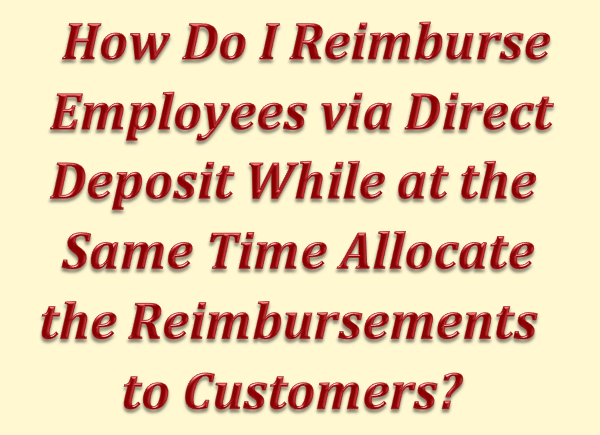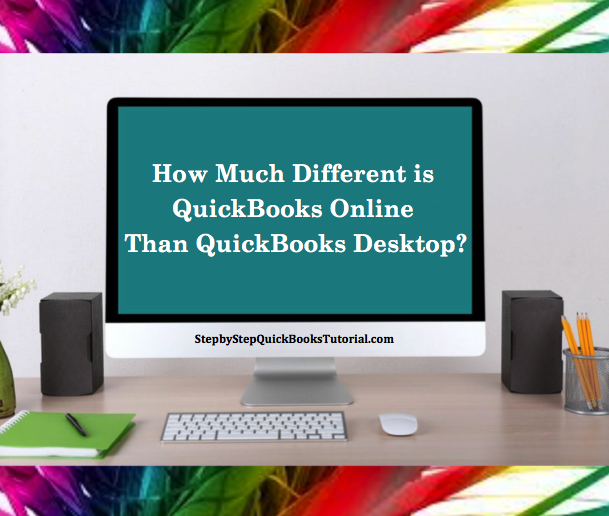by Marie | Aug 24, 2016 | Customer Setup & Management, Preferences & Customization, QuickBooks Essentials

Accurate job costing is one of the most crucial tasks for managing job-based businesses such as construction companies, professional services firms, and even non-profits that are awarded grants. Many owners put this off because it seems too complicated or time-consuming; however, if you are serious about helping your business grow and flourish, you need to do this sooner than later. It will help you to:
- Analyze how each of your jobs is doing financially
- Identify jobs that were not as profitable as expected
- Identify problem jobs as early as possible
- Create better estimates for future jobs
QuickBooks is an inexpensive program that can do powerful job costing with the data you are already entering, providing you set it up and use it correctly. Here are the three (3) steps to get this done:
The first step to setting up QuickBooks for job costing is to set your preferences: You do this by going to Edit, Preferences, then Company Preferences:
 Go to Jobs & Estimates and check the box next to Do you create estimates. You might also want to check the box next to Do you do progress invoicing.
Go to Jobs & Estimates and check the box next to Do you create estimates. You might also want to check the box next to Do you do progress invoicing.
 If you use QuickBooks for payroll – as every business doing job costing should, go to Payroll & Employees and check the box next to Job costing, class and item tracking for paycheck expenses.
If you use QuickBooks for payroll – as every business doing job costing should, go to Payroll & Employees and check the box next to Job costing, class and item tracking for paycheck expenses.
 If you track employee or subcontractor time by job, go to Time & Expenses and check the box next to Do you track time. If you do time & material billing, you should also check Create invoices from a list of time and expenses.
If you track employee or subcontractor time by job, go to Time & Expenses and check the box next to Do you track time. If you do time & material billing, you should also check Create invoices from a list of time and expenses.
The second step is to setup your customer:jobs and use them on every transaction:
 Go to the Customer Center and click on the New Customer & Job button.
Go to the Customer Center and click on the New Customer & Job button.
 You might also want to create a customer called “Overhead” or “Administrative” for non-job expenses so you get into the habit of entering a customer:job on all your transactions. The Contractors edition also has a really helpful special job costing report called “Expenses Not Assigned to Jobs”. If you are using classes, you might want to consider doing the same thing so you can use the Profit & Loss Unclassified report to make sure you didn’t accidentally leave off a class. Very useful feature!
You might also want to create a customer called “Overhead” or “Administrative” for non-job expenses so you get into the habit of entering a customer:job on all your transactions. The Contractors edition also has a really helpful special job costing report called “Expenses Not Assigned to Jobs”. If you are using classes, you might want to consider doing the same thing so you can use the Profit & Loss Unclassified report to make sure you didn’t accidentally leave off a class. Very useful feature!
The third step is to setup items and use them on every transaction:
 Go to Lists, Item List, click on the List button, and select New.
Go to Lists, Item List, click on the List button, and select New.
 Add a new service item for every job phase you want to job cost. For subcontractors, this could be as simple as Labor and Materials. For general contractors, it could be quite lenghty: plans, site work, excavation, concrete, masonry, framing, etc. In this case, you might want to add sub-items for Labor and Materials to your items if you want to track those costs separately. This also makes it easier to report only the Labor portion of a subcontractor’s invoice on their 1099.
Add a new service item for every job phase you want to job cost. For subcontractors, this could be as simple as Labor and Materials. For general contractors, it could be quite lenghty: plans, site work, excavation, concrete, masonry, framing, etc. In this case, you might want to add sub-items for Labor and Materials to your items if you want to track those costs separately. This also makes it easier to report only the Labor portion of a subcontractor’s invoice on their 1099.
 If you are a contractor with short-term jobs, be sure to set up all your Service Items as two-sided, with both an expense and an income account. This does not occur automatically and unfortunately it is not very intuitive. You need to put a check next to This service is used in assemblies or is performed by a subcontractor or partner for the expense box to be added to the setup screen. Contractors often use a cost of goods sold account called something like “job related costs” for “job-related expenses”.
If you are a contractor with short-term jobs, be sure to set up all your Service Items as two-sided, with both an expense and an income account. This does not occur automatically and unfortunately it is not very intuitive. You need to put a check next to This service is used in assemblies or is performed by a subcontractor or partner for the expense box to be added to the setup screen. Contractors often use a cost of goods sold account called something like “job related costs” for “job-related expenses”.
 Builders and many professional service firms have projects that span several months or more, generally use a work in progress (WIP) or construction in progress (CIP) asset account because job related costs are not usually expensed until the project is completed. In this case, you should map the expense account to their WIP or CIP asset account.
Builders and many professional service firms have projects that span several months or more, generally use a work in progress (WIP) or construction in progress (CIP) asset account because job related costs are not usually expensed until the project is completed. In this case, you should map the expense account to their WIP or CIP asset account.
 Depending on your circumstances, there are also several “Other Charge” items you should set up. These do not need to be two-sided if:
Depending on your circumstances, there are also several “Other Charge” items you should set up. These do not need to be two-sided if:
a) You use WIP or CIP accounts, you should setup two items: (1) Transfer out of WIP – with WIP as the account and note in the description that the amount should be positive, and (2) Transfer into COS – with COS as the account and note in the description that the amount should be negative
b) You accept customer deposits or retainers, you should setup an item mapped to a current liability account. For better tracking, you should consider setting up a separate current liability account just for deposits.
c) You have customer retention or retainage, you should setup an item mapped to an accounts receivable account and a negative for the Amount (for instance, -10% if your retainage is 10%). For better tracking, you should consider setting up a separate accounts receivable account just for retain age.
This should help you immensely if you put it in place now, and start using it – at all times.
by Marie | Aug 24, 2016 | Employee Setup & Management, Reimbursements and Investments

Since QuickBooks does not allow for customer jobs to be added to payroll addition items, you will need to use one of two (2) approaches:
Approach 1:
a) Setup your employee as a vendor
b) Then setup the vendor for direct deposit
Using this method will allow the employee expenses to go into their vendor record which can have job costing. Just remember to create a credit memo to clear the vendor account and place the costs into a clearing account, at the end of the month. The clearing account is cleared in payroll by an item that zeroes out the clearing account.
Approach 2:
a) Uncheck the box next to “Track Expenses by Job” for your reimbursement item
b) Next, prepare a $0 journal entry using the same expense account on both lines but add a customer:job to the the debit and no customer:job to the credit, and mark the debit line as billable.
by Marie | Aug 24, 2016 | QuickBooks Compatibility & Industry Types, QuickBooks Essentials, QuickBooks for Mac, QuickBooks for Windows, QuickBooks Online, Resources, Third Party Applications - QuickBooks Compatible

QuickBooks Online interface is very different, and if you are use to the desktop versions, you probably will not like the Online version. It works differently and what can be easily done in the desktop version in a few, usually requires jumping through 2+ hoops in the online version. It is actually more expensive in the long run and clients who have more than one business will definitely find the desktop version more cost effective.
However, according to its maker – Intuit, QuickBooks Online will be the future and so it’s best to get on board sooner than later. Also, I have to say QuickBooks Online has improved greatly within the last three years, and prior to these improvements I was not recommending it at all to my clients.
As with everything else, QuickBooks Online has its advantages as well as disadvantages. The two (2) main advantages of QuickBooks Online being: 1) The ability to access it from anywhere with an internet connection on multiple devices, as well as host multiple users simultaneously. And 2) QuickBooks Online has a ton of third-party applications that can be integrated to make it do much, much more than it already does by itself.
The main disadvantage is that you have to pay a monthly fee which will undoubtedly be increasing over time, and something you will have no control over. Also, if you have multiple businesses, you will need to have a QBO account for each – unlike the desktop version where you could have as many companies in the one version as you like.
The world is becoming more pro “cloud” whether we like it or not, and so it is inevitable that we will need to be a part of that if we want to do any form of business. I say find the positives, and get with it.
by Marie | Apr 26, 2016 | Bookkeeping 101, Importing Files & Forms To QuickBooks, Third Party Applications - QuickBooks Compatible

There are three (3) options to accomplishing this task.
Option 1:
You can backup the file you last used – each time you use it, and restore it to the next computer you will be using. This is highly discouraged! Under no circumstances would I advise using multiple copies of the same QuickBooks data file; however, it can be done. The problem with this is that transferring your QB data file back and forth opens the door for errors, which can be very costly. There is so much that could go wrong! Just imagine that you end up having some data in one file and not in the other, while the other has some data that is not in the one you are currently using. Disaster!
To Backup QuickBooks File to Removable Storage Device:
Go to File, Backup, and select the location of the Removable Storage Device. Then click Backup or Start Backup.
To Restore QuickBooks File from Removable Storage Device:
Open the QuickBooks company file on your computer, and go to File, Restore a backup copy, and confirm “YES” when prompted.
For Mac computer, double click on the QuickBooks file on the flash drive or other storage device with your backup, then drag it to your desktop or location you wish to store the file. QuickBooks Mac Pro does not overwrite previous files, instead it creates new disk images with each new file. Because of this, you want to ensure that you keep careful track of the current file in use. You do not want to be using multiple files, thinking that it’s the same file, but realizing later that pieces of your information are in various QuickBooks files. If you are the only one using this file on both computers, and you insist on getting things done this way, be sure to make a note of the last entry you made along with the date just before you backup each time after using. Then, look if that last entry is in the file you are about to use, before you start updating it with new transactions.
Option 2:
You can establish your office computer as the “primary” data file, and use a remote access program such as Go to My PC to access and work on it from home. This way, the QuickBooks data file on your office computer remains the primary file, while allowing you to update it remotely and thus using one file. The problem with this, is that you will need to leave the office computer on, in order to access it.
Option 3:
There are also hosting options available such as, Swizznet.com where you can store your data and access from anywhere with an internet connection; however, like QuickBooks Online, your “real” data is not on your hard drive. If you are going to use this route, you may be better off using the Online version of QuickBooks.
by Marie | Apr 25, 2016 | Bookkeeping 101, Company Setup & Management, Invoicing & Receivables, QuickBooks for Mac, QuickBooks for Windows, QuickBooks Online, Reimbursements and Investments

The most common cause of this problem is that some items are using COGS for the income account. If you have invoices with items that have a COGS account as their income account, this will definitely cause a negative Cost of Goods Sold. Review the invoices hitting COGS and see which actual items are involved and then change the items in the item list. You have more credits than you do debits and those credits are coming from invoices hitting Cost of Goods Sold. COGS should be a debit with no invoices in the detail. You need to look at the invoices that are hitting COGS and see which exact line item it is. That is the item that has the incorrect account for income. That said, there a few other things that can cause the COGS to be negative.
Few things that can cause the COGS to be negative:
- Using an item on the invoice that has a COGS account as the income account
- Using an inventory item on a credit memo
- Using the COGS account as a credit on a journal entry
- Using the COGS account on a deposit
To fix the negative Cost of Goods Sold problem:
To locate and correct this issue, you need to start by generating a detail transaction report of your Cost of Goods Sold account(s). Once you have done that, double-click on all the negative transactions to see what exactly is causing the problem. You can also select the Reports button at the top of the transaction (not the top-level menu) and then select Transaction Journal. You can press Ctrl Y while the transaction is open to see what the underlying journal is.
You are looking for amounts in the Credit column for the COGS account – debits increase it, credits decrease it. If you are using items, inventory and other functionalities of QuickBooks, the direct problem could be one or more bills, checks, credit card charges, Invoices, credit memos, journal entries, or deposits. This report will show you exactly what is causing it.
In addition, you need to make sure that reimbursable expense is an Income account if you have reimbursables, and also ensure that the option is checked in the Preferences to track reimbursable expenses by going to Edit, Preferences, Time & Expenses, Company Preferences and make sure “Track reimbursed expenses as income” is checked.
Similar Articles:
 Go to Jobs & Estimates and check the box next to Do you create estimates. You might also want to check the box next to Do you do progress invoicing.
Go to Jobs & Estimates and check the box next to Do you create estimates. You might also want to check the box next to Do you do progress invoicing.
 If you use QuickBooks for payroll – as every business doing job costing should, go to Payroll & Employees and check the box next to Job costing, class and item tracking for paycheck expenses.
If you use QuickBooks for payroll – as every business doing job costing should, go to Payroll & Employees and check the box next to Job costing, class and item tracking for paycheck expenses. If you track employee or subcontractor time by job, go to Time & Expenses and check the box next to Do you track time. If you do time & material billing, you should also check Create invoices from a list of time and expenses.
If you track employee or subcontractor time by job, go to Time & Expenses and check the box next to Do you track time. If you do time & material billing, you should also check Create invoices from a list of time and expenses.
 Go to the Customer Center and click on the New Customer & Job button.
Go to the Customer Center and click on the New Customer & Job button. You might also want to create a customer called “Overhead” or “Administrative” for non-job expenses so you get into the habit of entering a customer:job on all your transactions. The Contractors edition also has a really helpful special job costing report called “Expenses Not Assigned to Jobs”. If you are using classes, you might want to consider doing the same thing so you can use the Profit & Loss Unclassified report to make sure you didn’t accidentally leave off a class. Very useful feature!
You might also want to create a customer called “Overhead” or “Administrative” for non-job expenses so you get into the habit of entering a customer:job on all your transactions. The Contractors edition also has a really helpful special job costing report called “Expenses Not Assigned to Jobs”. If you are using classes, you might want to consider doing the same thing so you can use the Profit & Loss Unclassified report to make sure you didn’t accidentally leave off a class. Very useful feature!
 Go to Lists, Item List, click on the List button, and select New.
Go to Lists, Item List, click on the List button, and select New. Add a new service item for every job phase you want to job cost. For subcontractors, this could be as simple as Labor and Materials. For general contractors, it could be quite lenghty: plans, site work, excavation, concrete, masonry, framing, etc. In this case, you might want to add sub-items for Labor and Materials to your items if you want to track those costs separately. This also makes it easier to report only the Labor portion of a subcontractor’s invoice on their 1099.
Add a new service item for every job phase you want to job cost. For subcontractors, this could be as simple as Labor and Materials. For general contractors, it could be quite lenghty: plans, site work, excavation, concrete, masonry, framing, etc. In this case, you might want to add sub-items for Labor and Materials to your items if you want to track those costs separately. This also makes it easier to report only the Labor portion of a subcontractor’s invoice on their 1099.
 If you are a contractor with short-term jobs, be sure to set up all your Service Items as two-sided, with both an expense and an income account. This does not occur automatically and unfortunately it is not very intuitive. You need to put a check next to This service is used in assemblies or is performed by a subcontractor or partner for the expense box to be added to the setup screen. Contractors often use a cost of goods sold account called something like “job related costs” for “job-related expenses”.
If you are a contractor with short-term jobs, be sure to set up all your Service Items as two-sided, with both an expense and an income account. This does not occur automatically and unfortunately it is not very intuitive. You need to put a check next to This service is used in assemblies or is performed by a subcontractor or partner for the expense box to be added to the setup screen. Contractors often use a cost of goods sold account called something like “job related costs” for “job-related expenses”.  Builders and many professional service firms have projects that span several months or more, generally use a work in progress (WIP) or construction in progress (CIP) asset account because job related costs are not usually expensed until the project is completed. In this case, you should map the expense account to their WIP or CIP asset account.
Builders and many professional service firms have projects that span several months or more, generally use a work in progress (WIP) or construction in progress (CIP) asset account because job related costs are not usually expensed until the project is completed. In this case, you should map the expense account to their WIP or CIP asset account. Depending on your circumstances, there are also several “Other Charge” items you should set up. These do not need to be two-sided if:
Depending on your circumstances, there are also several “Other Charge” items you should set up. These do not need to be two-sided if:






Recent Comments